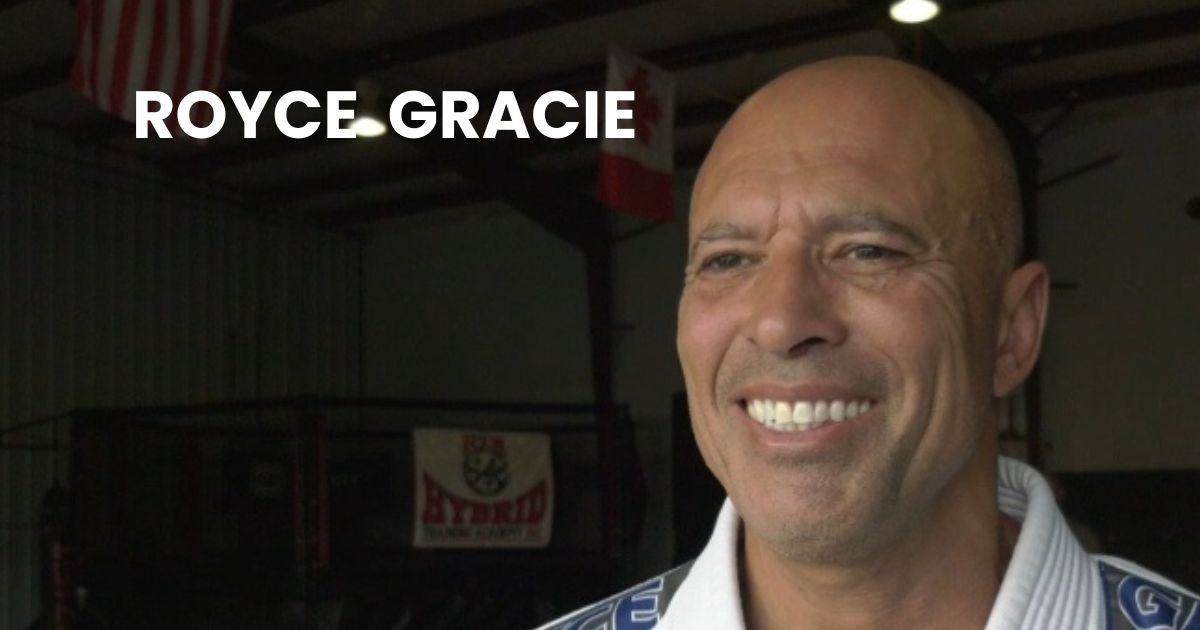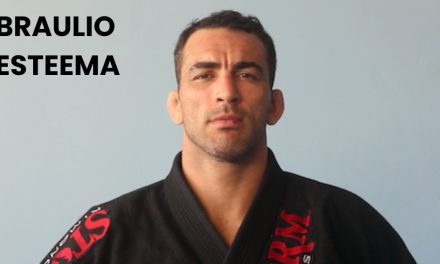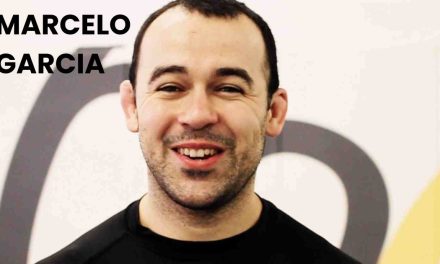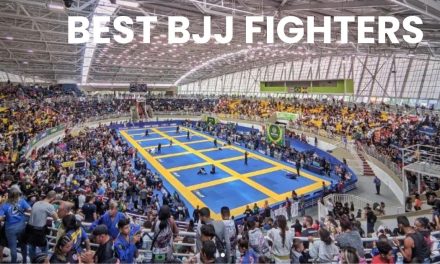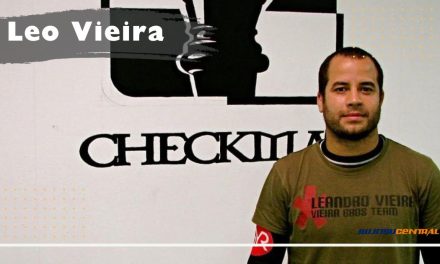Royce Gracie, a legendary figure in martial arts, hails from the renowned Gracie family who initiated the development of Brazilian Jiu-Jitsu (BJJ). He gained international fame in the early 1990s as a trailblazing competitor in the Ultimate Fighting Championship (UFC), where his skills in submission grappling revolutionized mixed martial arts (MMA). This made him the best BJJ Fighters at the time.
Royce’s utilization of BJJ in a no-holds-barred combat setting showcased the effectiveness of technique over size, influencing the way martial arts is approached and practiced around the world.
Before his rise in the UFC, Royce’s early life was deeply rooted in the practice of Brazilian Jiu-Jitsu, having received rigorous training from his older brother and his father, Hélio Gracie, one of the founders of the art. This foundation prepared him for a series of performances that would leave a lasting impression on the combat sports industry. Beyond the UFC, Royce Gracie competed in Pride Fighting Championships and engaged in other professional fights, further cementing his status as a martial arts icon. His impact extends beyond the octagon, from contributing to the growth of BJJ worldwide to various philanthropic endeavors, enhancing his legacy not just as a fighter but as an ambassador for the sport.
Key Takeaways
- Royce Gracie is a vital figure in martial arts, known for popularizing Brazilian Jiu-Jitsu through his UFC performances.
- His early life and background in BJJ provided the foundation for his successful and influential career in fighting sports.
- Gracie’s impact extends beyond his fighting career, contributing to his cultural legacy and involvement in philanthropy.
Early Life and Background
Your journey through Royce Gracie’s early years starts in the vibrant city of Rio de Janeiro, where the seeds of the Gracie family legacy in martial arts were sown. You’ll witness his disciplined martial arts training and understand how it served as the bedrock for his swift rise to prominence in the fighting world.
Gracie Family Legacy
Royce Gracie was born into the renowned Gracie family, known for their foundational role in Brazilian Jiu Jitsu. Helio Gracie, Royce’s father, was instrumental in adapting traditional Japanese Jiu Jitsu to create a form that could allow a smaller, weaker opponent to defeat a larger one, effectively birthing Brazilian Jiu Jitsu.
Martial Arts Training
From the tender age of just 1 or 2, Royce Gracie began learning the art of Jiu Jitsu. His father, Helio, and uncles, started teaching him the family’s hallmark grappling techniques, effectively embedding the martial discipline into his daily routine.
Rise to Prominence
Royce Gracie’s entry into the professional fighting world marked a pivotal moment in martial arts history. Standing out at 3 major competitions early on, he showcased the effectiveness of Brazilian Jiu Jitsu to a global audience, cementing both his and his family’s legacy in the sport.
UFC Career
Royce Gracie’s tenure in the Ultimate Fighting Championship (UFC) marked a turning point in mixed martial arts history. Your understanding of his career is crucial to appreciate his profound influence on the sport.
UFC 1: The Beginning
Gracie made an indelible mark at UFC 1, where he won the inaugural event, labeled The Beginning, making him a household name overnight. Utilizing Brazilian Jiu-Jitsu, he defeated three opponents in one night: boxer Art Jimmerson, Ken Shamrock, and Gerard Gordeau, securing the tournament victory.
Subsequent UFC Tournaments
In UFC 2: No Way Out, Gracie continued his dominance, overcoming four fighters to win the event. His success didn’t stop there, as he also emerged victorious in UFC 4: Revenge of the Warriors, after withdrawing from UFC 3 due to exhaustion.
Noteworthy Fights
A key moment in Gracie’s career was his draw against Ken Shamrock in UFC 5. With neither fighter able to secure a win, the match ended in a draw after 36 minutes—no judges were present to score the bout.
Superfight Championships
Gracie fought in the first-ever UFC Superfight Championship, facing Ken Shamrock once more. The match ended in a draw but showcased Royce’s enduring skill and determination in the cage.
UFC Hall of Fame
Acknowledging his significant contributions to the sport, Gracie was inducted into the UFC Hall of Fame in 2003. This honor represents his lasting legacy and pioneering influence in UFC history.
Retirement and UFC 60
Although he officially retired in 2007, Gracie’s return at UFC 60 against Matt Hughes was a landmark event. Despite losing the fight, his performance at the age of 39 demonstrated his continued passion and commitment to the sport.
UFC Records and Stats
Gracie’s UFC career stats are impressive with 14 wins, 2 losses, and 3 draws. His winning methods varied, often ending fights with submissions, proving the effectiveness of Brazilian Jiu-Jitsu in mixed martial arts.
| Stat | Number |
|---|---|
| Wins | 14 |
| Losses | 2 |
| Draws | 3 |
His record time for a submission was just 57 seconds during a fight at UFC 4. Gracie’s fights usually concluded within the first round, emphasizing the abrupt and decisive nature of his combat style.
Pride Fighting Championships
In examining Royce Gracie’s career, your attention to his Pride Fighting Championships involvement reveals key aspects of his legacy in mixed martial arts.
Pride Grand Prix 2000
Royce Gracie participated in the Pride Grand Prix 2000, a significant tournament in the history of Pride. In the opening round, he faced Nobuhiko Takada and secured a win after 15:00 minutes, showcasing his Gracie Jiu-Jitsu prowess in a tournament format that was novel to many viewers at the time.
Key Matches in Pride
Gracie’s battles in Pride were fierce and memorable. Among the consequential matches, his bout with Kazushi Sakuraba, dubbed ‘The Gracie Hunter’ due to Sakuraba’s success against Gracie family members, was a highlight. Their fight, which was not part of a tournament, occurred at Pride Grand Prix 2000 Finals and lasted a remarkable 90 minutes. Though Gracie fought bravely, Sakuraba won after Gracie’s corner threw in the towel due to Gracie’s inability to continue because of fatigue and damage to his leg.
Notable Performances
Gracie also fought Hidehiko Yoshida, an Olympic gold medalist in judo, at Pride Shockwave 2003. This bout was eagerly anticipated and ended in a draw after the full round time of 10:00 minutes. Both fighters demonstrated exceptional grappling skills and sportsmanship, leaving their mark in the annals of Pride Fighting Championships.
Other Professional Fights
While Royce Gracie is best known for his dominance in the early UFC events, he also competed in other professional fights outside of the UFC, showcasing his skills in various organizations.
Bellator MMA
In Bellator MMA, Gracie’s fight history includes a notable matchup at Bellator 149. This event featured Gracie years after his prime, demonstrating his timeless appeal and skill in mixed martial arts. The fight took place on February 19, 2016, against a well-known adversary, Ken Shamrock.
| Event | Opponent | Result | Method |
|---|---|---|---|
| Bellator 149 | Ken Shamrock | Gracie Won | TKO (knee and punches) |
Gracie’s return to the ring was met with great anticipation. His performance was decisive, ending the bout with a TKO due to knee strikes and punches. Despite his age, your understanding of his fight at Bellator 149 should be clear: Gracie remained a formidable opponent and secured a victory through his proficient grappling and striking, showcasing both the impact of his legacy and evolution of his fighting style in the realm of professional MMA.
Submission Grappling Career
Royce Gracie, a pioneer in submission grappling, has an esteemed career defined by his proficiency in Brazilian Jiu-Jitsu. His fighting style is a blend of technical prowess and strategic execution, focusing on submissions to secure victories. Throughout his career, you’ll note that he popularized the rear naked choke, a submission that involves choking an opponent from behind, which he used effectively in multiple competitions.
Continuing his dominance on the mat, Gracie showcased the versatility of his grappling skills by executing a range of submissions. Among them, the lapel choke stands out, where he utilized his opponent’s gi to apply pressure to the neck. Such techniques demonstrated Gracie’s skill in using his opponent’s attire to his advantage, reflecting the depth of his grappling expertise.
One notable aspect of his career is his resilience in matches that resulted in a draw due to time limits. Gracie’s endurance in these lengthy bouts was a testament to his conditioning and strategic planning. Nonetheless, he continuously pursued a finish, ideally by submission.
Gracie also contributed to the visibility of less common submissions, like the omoplata shoulder lock, showcasing its effectiveness in high-level competition. His use of the omoplata was not only a display of technical knowledge but also an inspiration for future grapplers to incorporate it into their arsenal.
Over the years, your analysis of Gracie’s career will reveal that his approach to submission grappling has been influential in shaping the landscape of Brazilian Jiu-Jitsu and mixed martial arts, inspiring countless athletes to adopt a submission-focused grappling style. His legacy is firmly entrenched within the sport, and your understanding of submission grappling is likely richer for his contributions.
Cultural Impact and Legacy
Royce Gracie redefined the landscape of mixed martial arts with his technique and family legacy. His exploits inside the Octagon have made a lasting mark on combat sports and popular culture.
Influence in Mixed Martial Arts
Royce Gracie is credited with showcasing the dominance of Brazilian Jiu-Jitsu in MMA, particularly in the early UFC events. His victories in UFC 1, 2, and 4 established a trend for fighters to learn Jiu Jitsu to become well-rounded athletes. This influence was evident as many present-day fighters incorporate it as a foundational skill in their arsenal.
Appearances and Media
Gracie’s reach extended into the entertainment world with appearances in media. From films to video games, his persona has been featured or referenced, familiarizing a wider audience with MMA. He lent his experience to televised events too, such as HERO’s Dynamite!! USA and K-1 Dynamite!! 2004, further integrating MMA into mainstream sports media.
Royce Gracie in the Public Eye
Royce has also impacted the public perception of MMA and influenced how male and female fans perceive and appreciate the sport. As a fighter and a regular fixture in MMA-related media, his demeanor and conduct have helped shape the stereotype of a martial artist in the modern era: disciplined, skilled, and respectful.
Contributions to Jiu-Jitsu
In the realm of Jiu-Jitsu, Royce’s success in the Octagon brought unprecedented attention to the martial art founded by his father, Helio Gracie. His success contributed to the sport’s global spread, leading to a surge in the number of people eager to learn Jiu-Jitsu—both as a self-defense system and as a sport.
Gracie Family Influence
The Gracie family, with Royce at the forefront, has influenced countless individuals worldwide. They have played a significant role in the recognition of Jiu-Jitsu as an essential discipline in MMA and have contributed to the cultural shift in combat sports where skill often trumps brute force. The family’s holistic approach to combat and life has inspired people to view martial arts not just as a sport but as a lifestyle.
Personal Life and Philanthropy
Royce Gracie, born on December 12, 1966, in Rio de Janeiro, Brazil, hails from the renowned Gracie family known for their development of Brazilian Jiu-Jitsu. You may find his personal life deeply rooted in the martial arts tradition of his family. He’s the son of Hélio Gracie, one of the founders of this martial art. Gracie is committed to his family’s legacy, often sharing his knowledge through seminars and training sessions.
Gracie’s philanthropic efforts align with his dedication to martial arts. He’s involved in various charitable initiatives that promote sports, health, and education. For instance:
- Sports Education: Gracie conducts free seminars for underprivileged youth, aiming to teach discipline and self-confidence through Brazilian Jiu-Jitsu.
- Health Awareness: He advocates for the benefits of a healthy lifestyle and supports campaigns that focus on nutrition and physical well-being.
Gracie doesn’t publicize much of his charity work, as he prefers to make an impact without seeking personal attention. Yet, his influence extends beyond the mats and the rings, contributing to the betterment of individuals and communities. His personal life and philanthropic work are a testament to his character; as a Gracie, Royce exhibits a profound sense of social responsibility, channeling the principles of respect and service taught by his family.
Conclusion
Royce Gracie, Brazilian Jiu-Jitsu legend, uniquely shaped mixed martial arts (MMA). Your understanding of MMA history is incomplete without acknowledging his impact. Through UFC championships, Gracie popularized ground fighting, demonstrating its efficacy.
In the early 1990s, you saw Gracie’s rise to prominence in the UFC. He secured victories against larger opponents, emphasizing technique over size. This strategy fundamentally changed how you perceive combat sports.
Gracie’s career statistics show a dominant submission grappling style:
- Victories: Impressive submission rate
- Losses: Few, underscoring his skill level
- Draws: Notable endurance in prolonged bouts
You witness Gracie’s legacy in modern MMA. The evolution of training regimens and fight strategies reflects his influence. Fighters from diverse backgrounds adapt aspects of Gracie’s techniques, illustrating his broad impact on the sport.
In recognizing Gracie’s contributions, you appreciate the strategic depth he brought to combat sports. Marks of his legacy:
- Pioneer in promoting Brazilian Jiu-Jitsu
- Adaptation of Gracie’s methods in various fighting styles
- Inspiration to countless athletes
Royce Gracie remains an indomitable figure in the history of MMA. His name is synonymous with skill, determination, and transformative influence in the world of competitive fighting.

